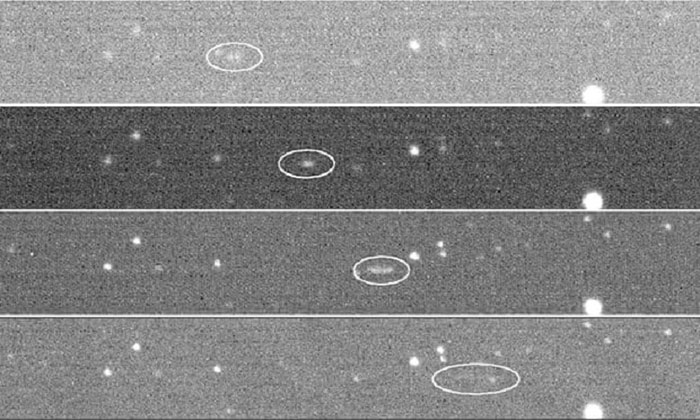The 2018LA asteroid’s flight path exploded over the Kalahari Desert, helping researchers track its origin.
Astronomers have reconstructed an asteroid’s 22 million year journey through the solar system and exploded over Botswana, creating a meteor shower over the Kalahari Desert. This is the first time that researchers have discovered the source of the meteorite explosion, in this case Vesta, one of the largest objects in the asteroid belt between Mars and Jupiter.
The 6-ton asteroid passed through Earth’s atmosphere at 59,545 km / h in June 2018 and exploded in the sky in a reserve in the central Kalahari, creating a fireball close to the sun. A search in the drop zone discovered a small asteroid named Motopi Pan.
NASA researchers have tracked dangerous objects over long distances like the moon, using telescopes in Arizona and Hawaii. After the collision, they asked Australian astronomers to check images from the SkyMapper telescope in New South Wales, which is used to study black holes. However, the SkyMapper also recorded the asteroid’s flight path, surprising the team.
The 2018LA asteroid images come from three telescopes spaced across the Earth’s surface, allowing astronomers to reconstruct the celestial trajectory and determine its origin. The flight path leading to Besta, an asteroid over 480 km wide can sometimes be observed without using a telescope. Based on the 2018LA trip, the team was able to locate their drop point in the reserve, helping to detect an additional 20 meteors over 4.8 km of land.
Geological analysis of the debris reveals the 2018LA deep below Vesta, but was shot down in space during a crater-creating impact on the asteroid about 22 million years ago. The ejected object wanders through the solar system, its surface being abraded by cosmic rays until it is attracted by Earth’s gravity and falls. Laboratory tests show that the oldest particles inside a meteor are 4.56 billion years old, when the solar system was still forming from very hot interstellar gases and disks of dust. Details of the discovery were published on April 23 in the journal Meteoritics and Planetary Science.


